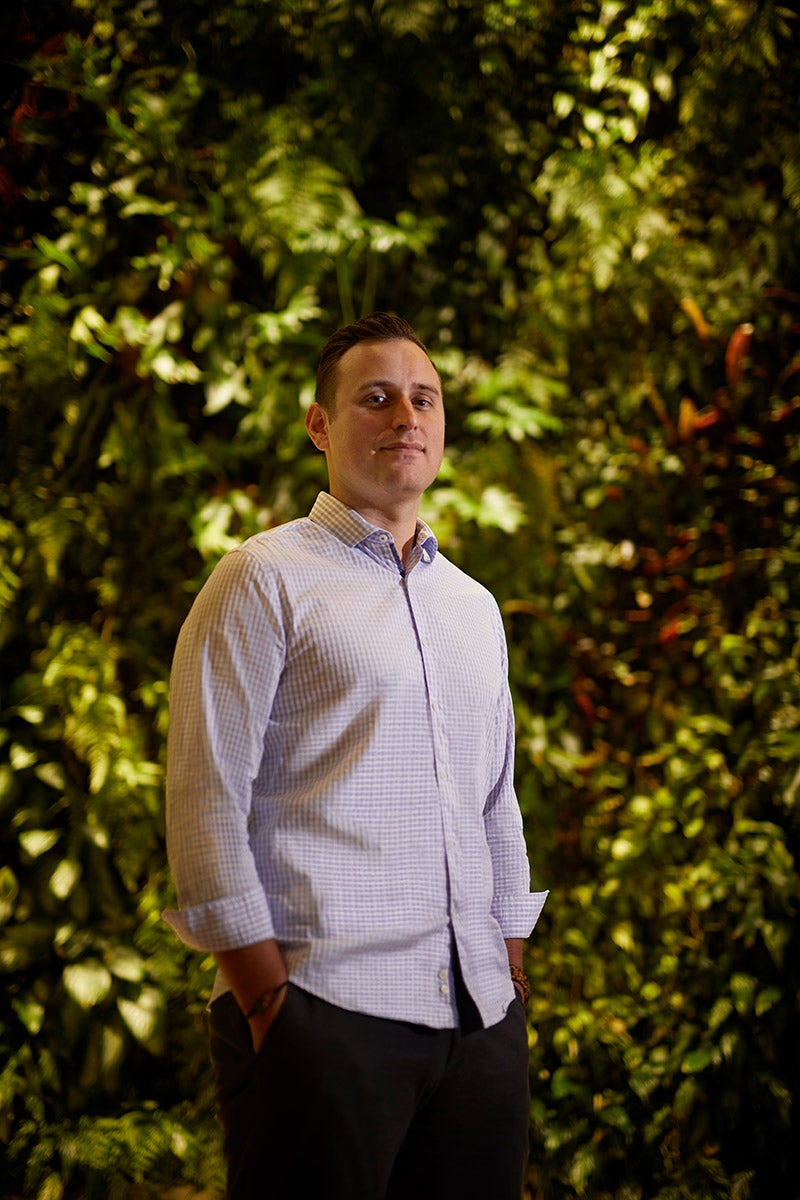Assigned to write a third-grade report on any animal of his choosing, Christopher Golden flipped through an encyclopedia and came across the ring-tailed lemur, an entrancing primate found only on the remote Indian Ocean island of Madagascar. Thus was launched a professional journey that has braided epidemiology, environmental science, and ecology.

Since 2004, Golden has been filling in the links between climate change and health among the Malagasy people, in hopes of refining both scientific understanding and on-the-ground interventions. “We should see Madagascar as the canary in the coal mine,” he says. “It is a place that does not have the infrastructure to mitigate the impacts of climate change, and as a result, it is experiencing profound impacts right now. That should charge us with greater incentive to change our own behaviors. We are the ones causing the climate problem and hurting vulnerable places that are not responsible.” He spoke recently with Madeline Drexler, editor of Harvard Public Health.
Q: You helped write a 2018 World Bank report that examined climate change and health in Madagascar. What were the biggest takeaways from that report?
A: One takeaway was the enormous health risks driven by climate and environmental changes. In Madagascar, the major public health concerns are malnutrition— 50 percent of the population in Madagascar is stunted, meaning they have short stature for a given age, indicating chronic malnutrition—maternal and child mortality, and malaria. Climate change will compound these endemic problems. Cyclones can wipe out agricultural fields. Droughts and floods likewise hurt agricultural production and food security. Floods caused by changing weather patterns also have links to diarrheal infections, because exposed toilets flood into water sources, which worsens Madagascar’s already-high intestinal parasite burden.
The second takeaway from the report was the lack of public health preparedness in Madagascar. Archaic disease surveillance and deficient information systems limit the government’s ability to intervene when there is an epidemic. Health officials can’t address current challenges, let alone anticipate future challenges driven by climate change.

Q: As a public health expert, what’s your role in helping the country’s rudimentary health system cope with the complex problems associated with a changing climate?
A: I’m working with the ministry of health and other ministries and offices to develop a climate-smart health surveillance system. This would integrate streams of data from climate, environment, agriculture, and health. The system would create a cohesive database that would build algorithms that predict how environmental variables relate to agriculture and disease outcomes. That would enable us to have much greater foresight about future disease incidence, which will help to mobilize resources and public health interventions.
For example, in Madagascar, where the vast majority of food is either produced or harvested from the local environment, people are incredibly vulnerable to localized crop failure. So we’re thinking about how changes in the climate system influence seasonal weather patterns that can lead to more drought or to a lack of soil moisture—conditions that, in turn, cause crop failures. We’re working on a project with Peter Huybers, professor of earth and planetary sciences at Harvard, to harness remotely sensed soil moisture data, locally collected crop production data, and historical observations of crops that have failed or thrived. Through that analysis, we will be able to describe future climate and soil moisture conditions for different areas of the country and figure out which crops are best suited for changing conditions in those areas.
More broadly, we’re looking at creating a novel database that has records of every coral-bleaching event from 1997 to the present. We’re hoping to link that information to fish catch from every coastal nation on earth over the same time period, in order to understand how coral bleaching drives nutritional shocks and disturbances. Many fish species are dependent on healthy coral to live, and bleaching events drive reductions in abundance or local extinctions of certain species. Using new models, we’re now able to project out to 2050 where coral-bleaching events will take place and then make projections about how that will destabilize food security and influence human nutrition. And we’re studying whether large reductions in fish catch, driven by rises in sea surface temperature and the poleward migration of important species, are hurting food security—not only in Madagascar but also in Southeast Asia and West and Central Africa.

Q: You have used the word “solastalgia” in your recent talks. The word refers to the emotional distress caused by witnessing environmental degradation, a feeling of powerlessness and loss of certainty about the future. In this era of rapid climate change, how is solastalgia playing out in Madagascar?
A: When you think about ways in which natural disasters have devastated their livelihood, or how seasonal changes of food scarcity and hunger linger in the psyche, you can understand their stress and anxiety. People feel vulnerable, and they know their families are vulnerable to inadequate food supplies and other health risks. Their well-being, their livelihoods, their society are closely intertwined with the forest and the surrounding ecosystem. Climate change in Madagascar is causing threads to be pulled out of an ecological fabric into which their lives are tightly woven. I can only imagine how unsettling that would be.








